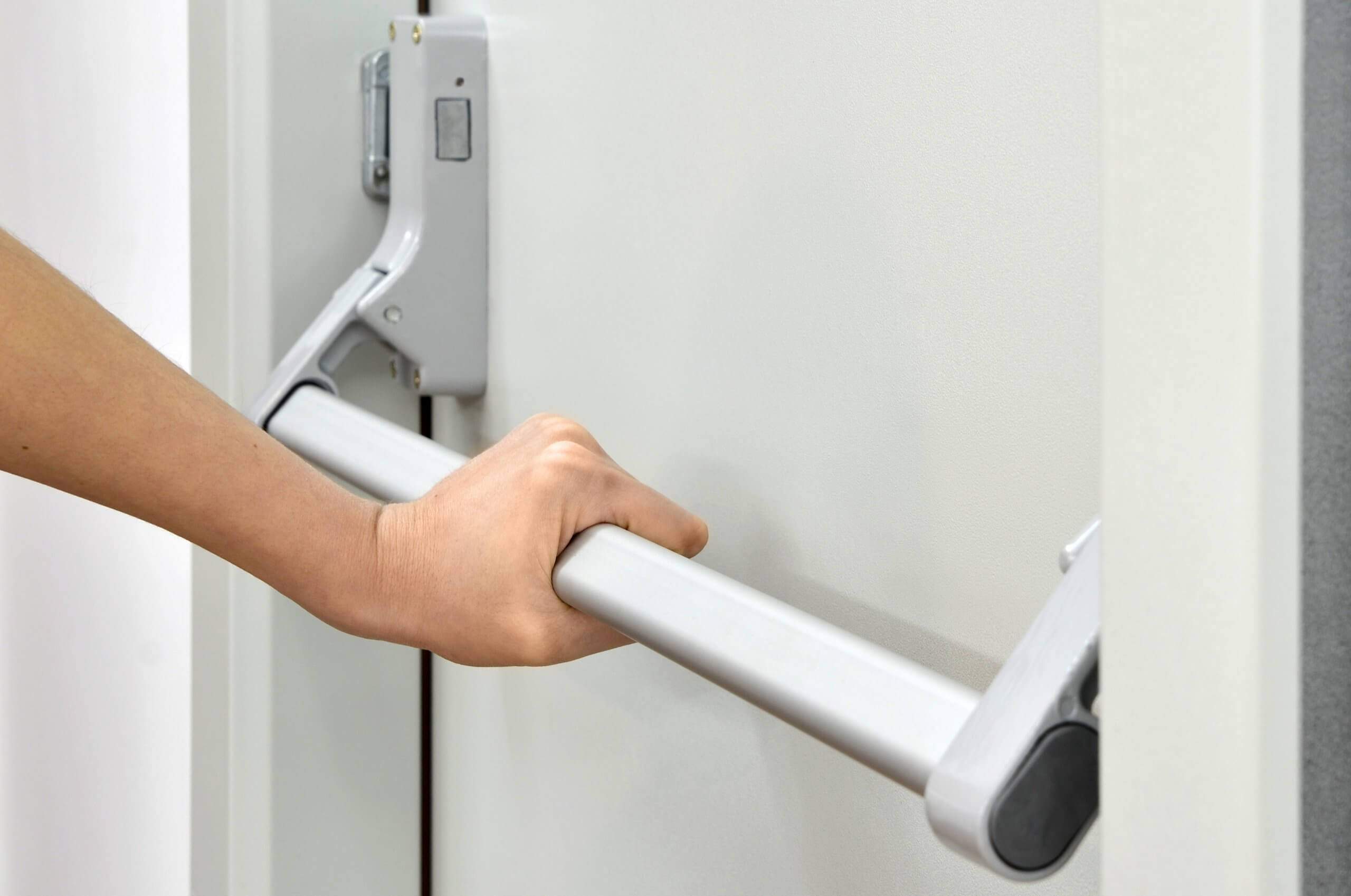
Exit devices are a building code requirement for structures of a particular type and occupancy. They are there to ensure a building's occupants can exit safely in the event of an emergency. Because of their durability and ease of use, they are often used in commercial buildings, even when they are not required by code.
When they’re used as intended, exit devices can keep your employees safe. Unfortunately, some business owners install deadbolts, rendering the hardware useless. Here are some of the things that you should know about exit devices in commercial buildings.
Exit devices -- also known as panic devices, crash bars, or push bars -- are spring-loaded metal bars that unlatch when they are pressed. They eliminate the need to unlock doors, saving precious time in an emergency.
Each device meets certain criteria and includes a label proving that it meets industry standards. Let's take a look at the three basic exit device models.
This is the most common design. When an individual pushes the pad into the body, the latch retracts.
Unlike other designs, an integral device does not extend out from the door. Instead, it's embedded into the face of the door.
This design features a bar that covers the width of the door. This bar runs from the latch case to the hinge case.
As mentioned, there are many types of exit devices on the market today. Today we will explore the three most common types.
This heavy-duty device has a lock body that rests inside a pocket in the side of the door.
Vertical rod devices have either one top latch or a latch at the top and bottom. These are most often used on double doors that can open separately from each other.
This type of exit device features a unique latch that protrudes out of the device itself. Unlike other safety devices, the rim latch is part of the push bar mechanism.
Rim exit devices work for single and double doors, as well as out-swinging doors.
There are many functions an exit device can serve. Code requirements and the functions you desire will assist you in deciding on a setup.
Exit device options include:
These options can pair with hardware and trim options to create a system that best meets your needs.
Double door leafs each have their own separate exit device. Rim exit devices are the most popular option. A mullion separates the two doors, with strikes installed on either side of the mullion.
Rim exit devices are the most popular kind of hardware used on single doors. With this setup, a reinforced frame houses the striking mechanism.
The most important feature of an exit device is its ease of use. The user should be able to push the bar or rod without any prior knowledge of the device.
Exit devices provide several benefits, including:
Crash bars must be ADA compliant and easily engaged for anyone who is attempting to evacuate the premises.
A routine maintenance plan for the system's components is very important. This ensures the safety of your employees and allows you to pass inspection requirements.
Work with your installer to develop a maintenance plan that includes the following procedures:
An annual checkup by a professional should include lubrication of all moving parts. Report and address any malfunctions immediately.
Are you considering the various options for your commercial space? CDF Distributors has a wide selection of devices to meet all your safety needs. Give us a call today to learn more or to design a custom door solution.